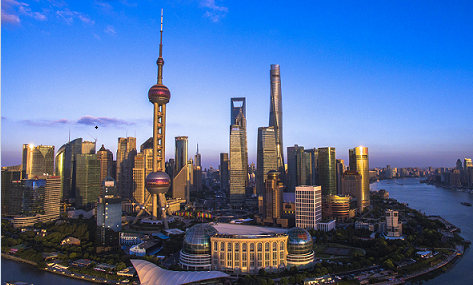Note: The following is an edited translation of an article from the Chinese-language "Commentaries on International Affairs" that first published on China Plus on December 24, 2018.
China's leadership held its annual Central Economic Work Conference last week, summing up the economic situation this year, thoroughly analyzing the current economic state and laying down the path for a new economic strategy next year. From the information disclosed, it's best to study and judge the Conference from the following three angles to get the proper pulse of China's economy.
First, the achievements have been hard-won, and lessons need to be learned.
2018 has been an extraordinary year for China. Against the background of an anti-globalization economic undercurrent, increasing trade frictions and rising uncertainty, the international community is concerned about how China is going to continue moving forward through the first full year of the 5-year plan laid out at the 19th National Congress of the Communist Party of China.
The Central Economic Work Conference noted that authorities fought tough battles this year against risk, poverty, and pollution, as well as challenges with supply-side structural reforms and enhancing people's lives in general. Despite these challenges, the Conference concluded that China was able to maintain healthy economic development and overall social stability, while also taking new steps toward creating a moderately prosperous society.
The meeting also concluded that China's economic planners have the ability to foresee risk within the "new situation."
The Conference noted that the country must assess its current circumstances from a long-term perspective and have a clear vision about its long-term development prospects; make macro-regulations more precise; actively fine-tune policies and enhance policy coordination; respond timely to concerns in society and guide market expectations in a targeted manner. The Conference insisted on the centralized and unified leadership of the ruling party's decision-making.
Second, China still maintains strategic development opportunities over the long-term.
In 2018, influenced by factors such as Sino-U.S. economic and trade frictions, the outside world began to question whether China still had strategic opportunities ahead for its economic development. Assessing this question, the Conference concluded that while there have been concerns as China's economy evolves, the country still has abundant long-term development opportunities.
The basis for making this judgment is that peace and development are still the themes of this era. Although economic globalization has hit some road bumps, the global industrial chain remains firmly linked.
At the same time, a technological revolution and industrial reforms have spawned new technologies and new concepts that the global markets still need to digest and verify. That said, China still has huge market potential and the confidence to keep opening up. Through this, China's role in the international community in terms of poverty alleviation, climate change and peacekeeping is indispensable.
As such, the Conference laid out a series of goals. China should speed up the optimization and upgrading of its economic structure, enhance the capability of technological innovation, deepen reform and opening-up, accelerate green development and participate in the reform of the global economic governance system. These five goals will create strategic opportunities in China's overall development.
Third, some economic keywords for 2019 help understand China's economic prospects.
Next year marks the 70th anniversary of the founding of the People's Republic of China. It is also a crucial year for the CPC to establish a moderately prosperous society in all respects. Economic development is of paramount importance. The Conference pointed out that the main challenges for China's economy are still structural on the supply side.
To meet this challenge, the Conference stressed that increased marketization and the rule of law should be utilized to speed up the clearing of industries with excessive capacity, reduce operating costs throughout society, increase the strength of infrastructure to make up for other shortcomings, enhance the vitality of micro market entities, upgrade the industrial chain and accelerate the construction of a unified, open, competitive and orderly modern market.
The meeting made it clear that China must continue to prevent major risks, reduce poverty and tackle pollution, advance a strong domestic market, promote rural revitalization strategies and regional development, and improve people's livelihoods.
In order to achieve these objectives, the Conference put forward a series of important initiatives. For example, the reorganization of the State Key Laboratory System is expected to help the manufacturing industry with technological innovation.
The Conference also proposed larger tax cuts and significant fee reductions to help both businesses and consumers. The meeting also emphasized creating a standardized, transparent, open, dynamic and resilient capital market, which indicates that capital market reform will be the most important part of China's financial system reform next year.
It emphasized protecting the legitimate rights and interests of foreign business people in China, especially intellectual property rights, allowing more areas to be "wholly-owned," indicating China's determination and confidence to further expand its opening-up and improving the business environment.
In July of this year, the International Monetary Fund released its annual report on the Chinese economy, affirming China's progress in several key areas of reform, pointing out that "China's economy continues to perform strongly, with growth projected at 6.6 percent for 2018."
It is undeniable that China's development is complicated, with many uncertainties. However, the Chinese economy has always been overcoming difficulties and climbing hills, each time showing that it can resist risk and turn a crisis into an opportunity.




 A single purchase
A single purchase









